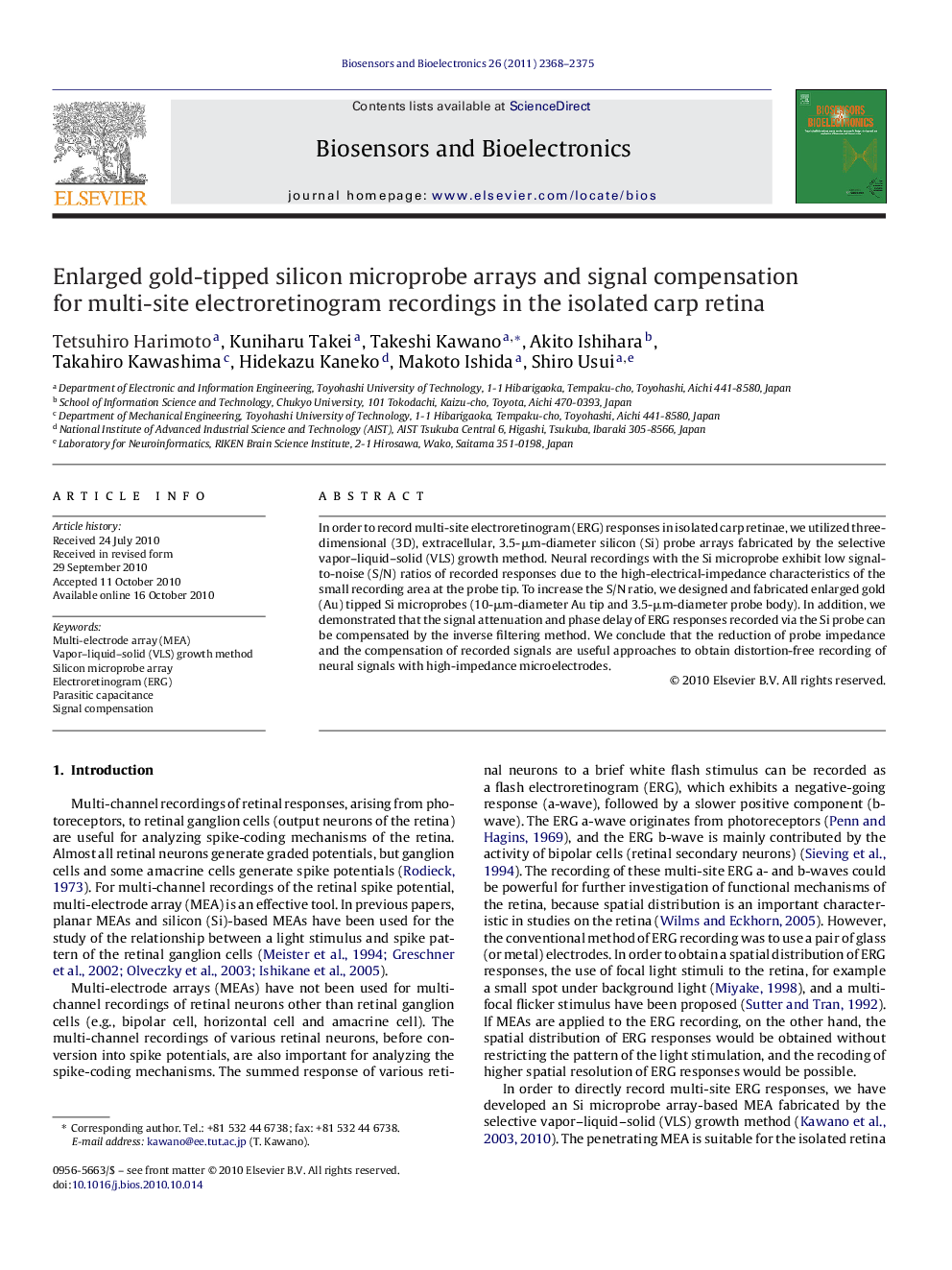| Article ID | Journal | Published Year | Pages | File Type |
|---|---|---|---|---|
| 868207 | Biosensors and Bioelectronics | 2011 | 8 Pages |
In order to record multi-site electroretinogram (ERG) responses in isolated carp retinae, we utilized three-dimensional (3D), extracellular, 3.5-μm-diameter silicon (Si) probe arrays fabricated by the selective vapor–liquid–solid (VLS) growth method. Neural recordings with the Si microprobe exhibit low signal-to-noise (S/N) ratios of recorded responses due to the high-electrical-impedance characteristics of the small recording area at the probe tip. To increase the S/N ratio, we designed and fabricated enlarged gold (Au) tipped Si microprobes (10-μm-diameter Au tip and 3.5-μm-diameter probe body). In addition, we demonstrated that the signal attenuation and phase delay of ERG responses recorded via the Si probe can be compensated by the inverse filtering method. We conclude that the reduction of probe impedance and the compensation of recorded signals are useful approaches to obtain distortion-free recording of neural signals with high-impedance microelectrodes.
